Introduction to How to Build a Brick Wall in 2023
Constructing a Brick Wall in 2023 can be a cost-effective, but also delightful, venture. Whether you envision a charming garden wall, a sturdy boundary wall, or a practical partition wall, we’re here to equip you with the foundational knowledge of brick walls. The basics of running with mortar are rather truthful; however, accomplishing a stage of craftsmanship that displays a professional touch requires an aggregate of thoughtful planning and hands-on practice. Whether you’re new to bricklaying or need to get higher, our guide will facilitate your step-by-step process on How to Build a Brick Wall in 2023 and show a way to make a top-notch wall that works and appears correct. You will learn what matters and feel desirable about what you’re doing.
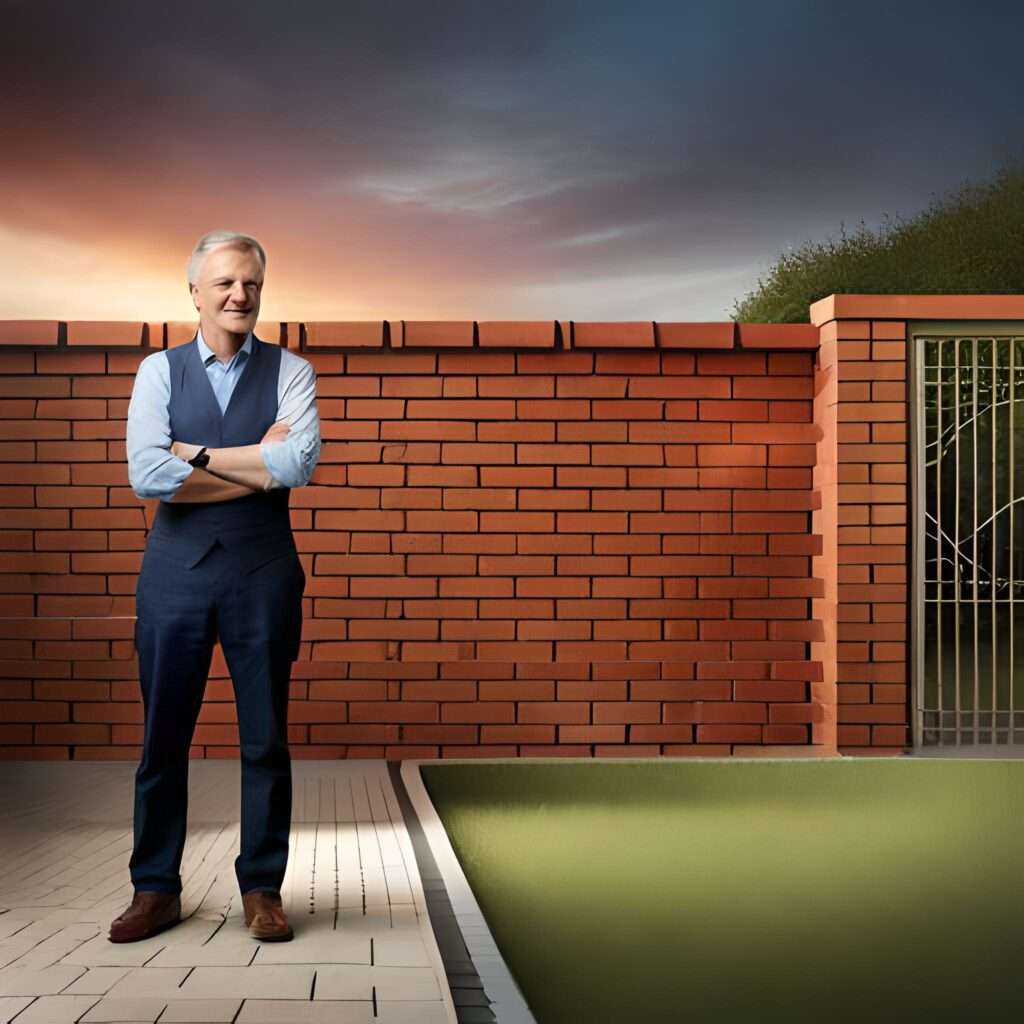
Content Outline
Here’s a simple list of things you need to know about how to Build a Brick Wall in 2023 smoothly and professionally:
A. What is a Brick?
1. The Evolution of Bricks in Building History
2. Raw Material for Brick
3. Size and Variability
4. Strengths and Durability
5. Mortar Adhesiveness
6. Types of Bricks
B. Step-by-Step Guide: How to Build a Brick Wall in 2023
1. Select the Perfect type of brick.
2. Calculate the number of bricks
3. Excavation for Footing
4. Foundation Footing for Brick Wall
5. Importance of Brick Soaking
6. Ingredients of Mortar
7. Laying the First Course
8. Perfecting the Corners
9. Brick Bond Pattern
10. Mortar Application
11. Vertical alignment of brick wall
12. Finishing touch of the Wall
13. Sealing the Gaps: Filling in Missing Mortar
14. Creating Neat Joints
15. Adding Strength with Pillars
16. Curing and Maintenance
17. Exploring Different Brick Wall Patterns
Conclusion:
FAQs
a. What is a brick?
Before starting the process of learning how to Build a Brick Wall in 2023, there is one thing that is important to know about brick. It is a major component in constructing a wall. Humans have been using bricks for a long time, from when historical civilizations were around to the cool homes we see today. The reason motive bricks are so famous is that they have a gaggle of characteristics that work nicely for both how things look and the way they work.
So, let’s dive deep into this topic and speak roughly. Now We’re going to explore the brick and its initial components, like their raw material, size, color, texture, strength, how they stick together with mortar, how to build with them, and all of the steps that go into making walls.

1. The Evolution of Bricks in Building History
Humans have used it for a long time, even hundreds of years ago. Back in ancient places like Mesopotamia and the Indus Valley, folks started making homes and strong walls using mud bricks. With time, people found out more and more about the latest ways to improve the quality of bricks. They started baking them in huge and tall ovens made from clay mud. This was a big deal because these new baked bricks were way stronger than the old mud ones.
2. Raw Material for Brick
The primary raw materials for making bricks are clay and water. Clay is the first major ingredient, providing plasticity and workability for different shapes. Water is the second important part to help mix and mold the clay, creating the right consistency for forming the bricks. Sometimes, adding other things like sand, shale, or other stuff makes it better. This can make them feel stronger, look better, or have different colors.

3. Size and Variability
In the process of How to Build a Brick Wall in 2023, the size of bricks is an important thing that has changed over the years to match the way people design and build things. Most of the time, go for a regular size called the ‘common brick.’ These are about 3-5/8 (3.625”) inches wide, 2-1/4 (2.25”) inches in height, and 7-5/8 (7.625”) inches in length.
But there are other types also available, like engineering bricks. These ones are tougher and stronger, so they’re used when a building or wall needs to support a lot of weight. There is a country list with dimension sizes for your information.
No. Country Brick Sizes
1 USA 7.625” x 3-625” x 2.25”
2. UK 8.6” x 4.1” x 2.6”
3. Australia 9.2” x 4.4” x 3.04”
4. Russia 10” x 4.8” x 2.6”
5. Pakistan 8.75” x 4.25” x 2.75”
6. China 9.6” x 6.2” x 2.12”
7. India 7.6” x 3.6” x 3.6”
8. Bangladesh 10” x 5” x 3”
4. Color and Texture
How a brick wall appears and feels has a big impact on how a wall or building looks. It comes in different colors, like warm reds, earthy browns, calm grays, and even clean whites. In the modern appearance of How to Build a Brick Wall in 2023, architects may use this color pattern to create lots of different styles for buildings.
The way a brick feels when you touch it is important too. It can be smooth, a bit rough, or even shaped by hand. When you put all these things together, it makes a wall or building special and fun to see
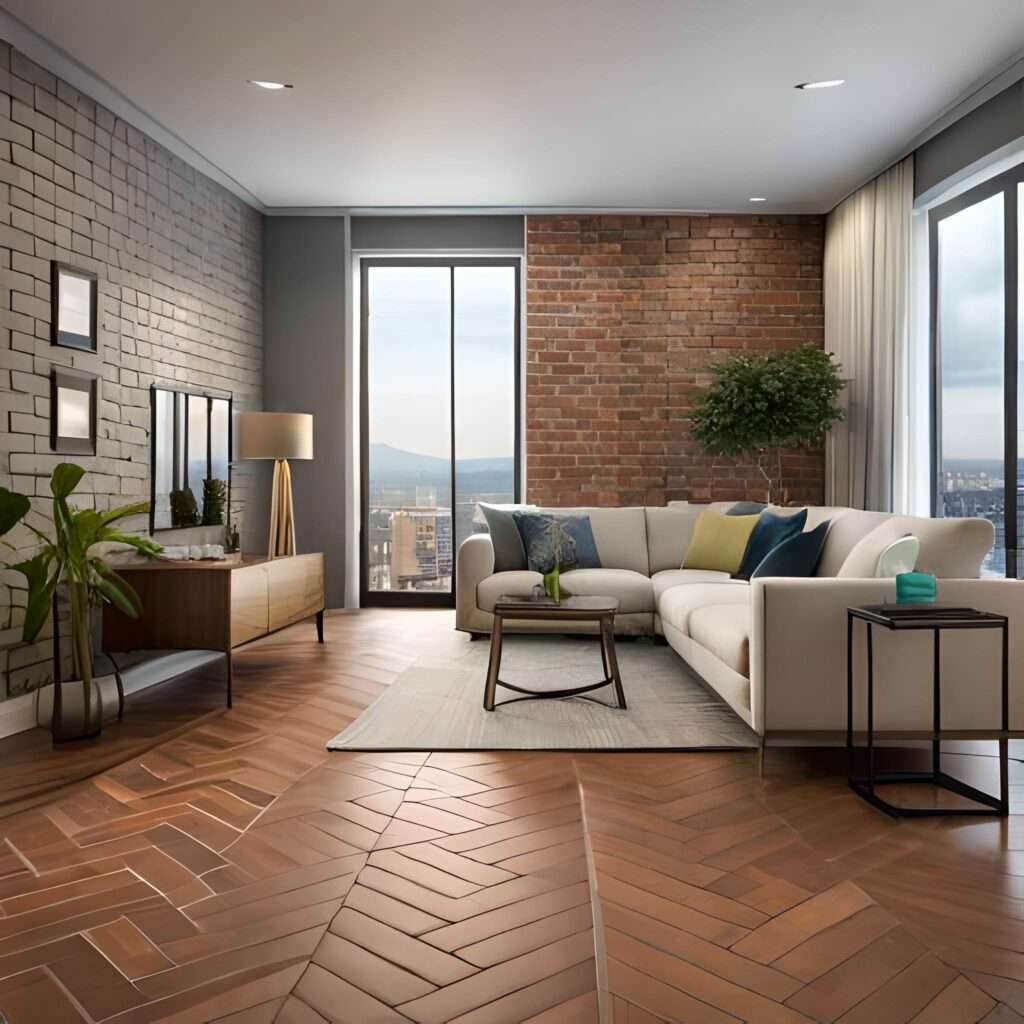
5. Strengths and Durability
The strength of a brick is like a rock-solid base for building things. There’s something called “compressive strength” that measures how well a brick can handle the weight on top of it without crumbling.
When people make bricks nowadays, they’re pretty smart about it. They mix the right materials, bake them at just the right temperature, and cool them down in a special way. This whole process makes the bricks super strong and durable, so they can withstand the tests of time and support buildings for a really long time.
6. Mortar Adhesiveness
Bricks are like building blocks, but the stuff that holds them together is super important too. This sticky stuff is called mortar, and it’s like the glue that keeps the bricks tight. Mortar makes sure the building stays strong and can handle the weight on top.
There are many types of mortar available depending on your needs, like the type of bricks used, the weather, and how heavy the wall or building is. Choosing the right mortar is a big deal because it determines how long the wall or building will stay strong.
7. Types of Bricks
How to Build a Brick Wall in 2023, in which Bricks have different compositions to suit different weather conditions. For example, there are three main types based on weather resistance:
Common Bricks: These are the usual bricks you find in many everyday spots. These work well in areas with moderate weather where it is not too hot, too cold, or too rainy.
Engineering Bricks: These are super tough. These are used in places where there is really tough weather, like freezing cold or heavy rain. They can handle a lot and still stay tough.
Facing Bricks: These are all about looks. They go on the outside of buildings and can handle some weather, but they’re not as strong as engineering.
Every kind of brick is made to match certain weather conditions. This way, walls stay tough and secure, no matter what the weather is like around them.
B. Step-by-Step Guide: How to Build a Brick Wall in 2023
We have the basic knowledge of bricks and their components, now get ready for an exciting adventure: How to Build a Brick Wall in 2023 So, let’s dive into a detailed look at the step-by-step process of creating a wall.
1. Select the Perfect type of brick.
When you start constructing the process of How to Build a Brick Wall in 2023, picking the correct type of brick that matches the weather in your area is really important. If you live in an area where most of the time is sunny and very hot, there are bricks that can handle that heat without a problem. But if you live in a rainy place, there are bricks that won’t get ruined by the wetness. So, before you begin, check out the different choices and pick the right one for your weather. This will help your wall stay tough and last for years, no matter how the weather acts.
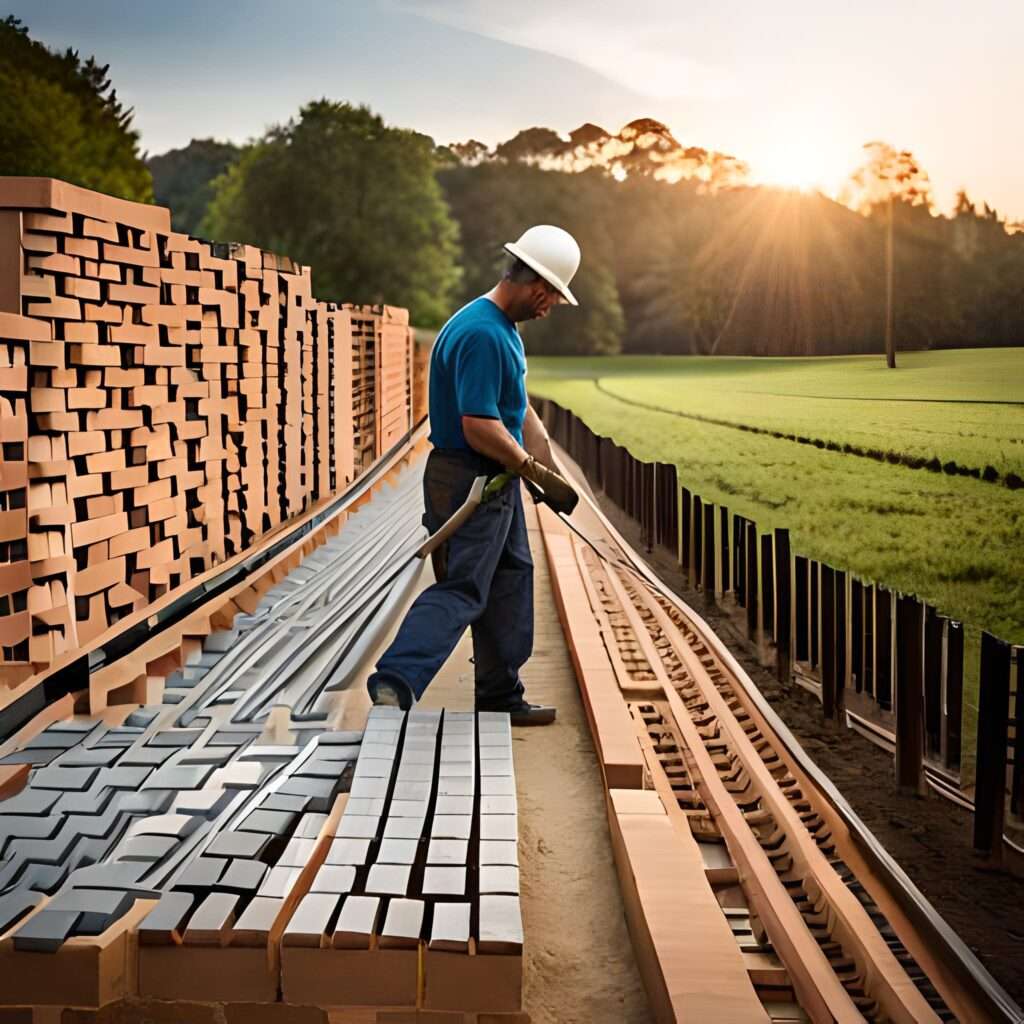
2. Calculate the number of bricks
Before starting the process of How to Build a Brick Wall in 2023, Calculating how many bricks you need is very important. First, measure the length and height of the wall that you want to build. Multiply these numbers to find the wall’s area in square feet or meters. Then, find out how big each brick is. Divide the total area by the site one brick covers (length times height). This calculation tells you how many bricks you will need. But, it’s smart to add a few extras for any mistakes or surprises.
Example for brick calculation
Now let’s take an example to help us know how many bricks we need for a wall that’s 10 feet long and 7 feet tall. The dimensions of the brick are 2-1/4 inches tall, 7-5/8 inches long, and 3-5/8 inches wide. To stick the bricks together, we use something called mortar, which is like glue. Usually, we put ½ inch of mortar between each brick.
When we include this mortar, the brick becomes a bit bigger. So, instead of 2.25 inches tall and 7.625 inches long, it becomes 2.75 inches tall and 8.125 inches long.
Convert Brick Dimensions to Feet:
Height = 2.75 inches = 2.75/12 ft = 0.229 ft
Length = 8.125 inches = 8.125/12 ft = 0.677 ft
Calculate Wall Area: Multiply the length and height of the wall to get the total wall area in square feet:
Wall Area = Length x Height
Area = 10 ft × 7 ft = 70 sq ft
Calculate the brick area using the dimensions provided:
Area = Length x Height
Area = (0.677) ft × (0.229) ft = 0.1551 sq ft
Calculate the Number of Bricks: Divide the total wall area by the brick area to find the estimated number of bricks needed.
Number of Bricks = Wall Area / Brick Area
Number = 70 sq ft / 0.1551 sq ft ≈ 451.32
Since you can’t have a fraction, round up to the nearest whole number, which is approximately 452 bricks.
3. Excavation for Footing
Excavation is the first initial step to start How to Build a Brick Wall in 2023, which lays the groundwork for a stable structure. Here are some key notes about the excavation process for the foundation footing:
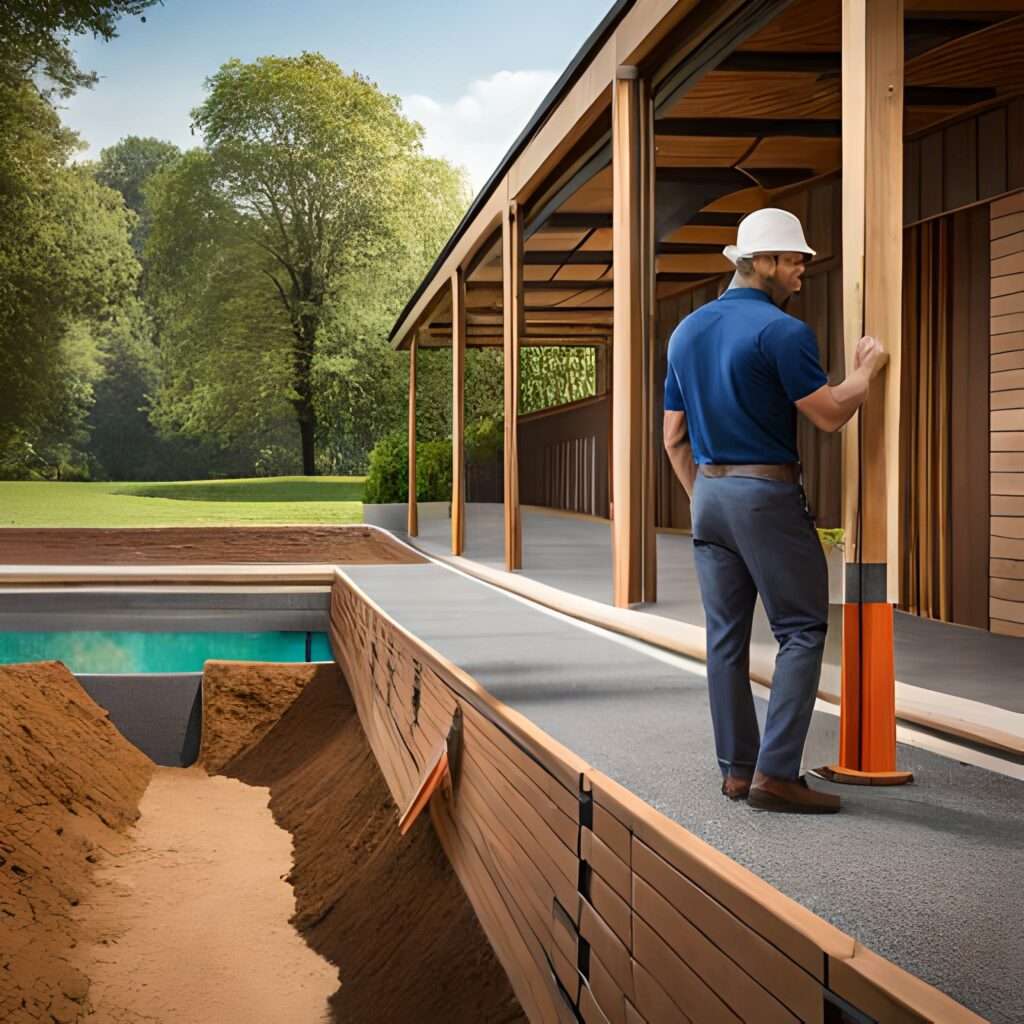
Ground Preparation: Excavation involves digging the ground to create a space for the foundation. This space is usually deeper than the actual foundation to allow for proper placement of the footing.
Measuring and Marking: Accurate measurements are essential. The dimensions of the excavation need to match the planned foundation dimensions, including the depth, width, and length. Proper markings guide the excavation work.
Safety Measures: Digging can be dangerous, especially if the ground isn’t steady. Make sure to Implement safety precautions like shoring, bracing, or trench boxes to prevent soil collapse and ensure worker safety.
Leveling and Sloping: The excavation floor needs to be level and even provide a solid base for the foundation. Any required slopes for drainage should be carefully calculated and maintained.
Clearing Debris: During excavation, debris and loose soil must be removed to ensure a clean work area.
Testing Soil: There are different types of soil in every region, and most of the time it is necessary for loose soil types to conduct soil tests. This helps determine its bearing capacity and composition, ensuring the right type of footing and foundation are used.
Inspecting Utilities: Before excavation, it’s important to locate and mark any underground utilities like pipes and cables. These marks and indications definitely prevent damage and disruption to services.
Excavation Equipment: The choice of equipment depends on the scale and nature of the project. Machinery like backhoes, excavators, or hand tools might be used for the excavation.
Site Drainage: Proper drainage around the excavation site is crucial to prevent water accumulation, which can affect the stability of the foundation.
You may also read: House Construction Step By Step Guides 2023
4. Foundation Footing for Brick Wall
The process of how to Build a Brick Wall in 2023 starts with another essential step called foundation preparation. This means getting the ground ready by making it strong and even. The foundation is like the stage floor, where all the action will happen. Once the foundation is set, it’s time to start the wall by placing the first row.
The kind of material you use for the base of a brick wall, called the foundation footing, depends on how strong the ground is. Here’s how it works:
Good Soil: If the ground is strong, you can use a broad base made of concrete or reinforced concrete. It spreads the weight out, like standing on both feet.
Uneven Soil: If the ground is not so strong, a thick, solid slab made of reinforced concrete or a mix of concrete and steel can help. It’s like a strong cushion under the wall, spreading the weight.
Decent Soil: If the soil is of moderate quality, long strips of concrete under the wall can help balance the weight.
Weak Soil: If the ground is weak, you can drive piles deep down. Piles are like strong legs made of materials like wood, concrete, or steel.
Very Weak Soil: In really weak ground, a big, strong slab made of reinforced concrete can work. It’s like a stable raft on water, spreading the load.
Remember, picking the right material depends on how well the ground can hold up the wall. Just like choosing shoes for different paths, talking to an expert will help you decide the best material based on the ground and the weight of the wall.
For a 7-foot-high wall, the foundation footing’s vertical height above ground level typically extends from one (1’) foot to one and a half (1.6’) feet to ensure stability and prevent moisture infiltration.
5. Importance of Brick Soaking
Before starting to construct How to Build a Brick Wall in 2023, it’s common practice to soak the bricks in water and allow them to dry. This simple yet crucial step, known as ‘soaking,’ involves immersing the bricks in water for a period of time.
Soaking helps absorb water and prevents it from rapidly absorbing moisture from the mortar during construction. This gradual absorption ensures that the bricks remain strong and stable, in order to reduce the risk of cracking or weakening due to abrupt moisture changes
6. Ingredients of Mortar
Mortar, the material used to hold bricks together, is made from a few things. The main parts are cement, which makes it strong, and sand, which fills the gaps. Water is added to help it harden. Lime can be mixed in to make it stick better and handle the weather. Sometimes, extras like plasticizers or accelerators are added to make it work even better. The amounts of these things change based on what kind of mortar is needed for the job.
7. Laying the First Course
The initial layer of bricks, known as the first course, is carefully placed on the foundation using mortar. This foundational row not only forms the base for the entire wall but also acts as a guide for the bricks to come. Achieving precision here is key, as the first course sets the level for all the following layers.
Builders ensure each brick is carefully aligned and evenly spaced, using a level to ensure a straight and uniform foundation. Place your starting row of bricks on the foundation without mortar first. Make sure they’re spaced right, considering the mortar in between. Use a tape measure to check the distance between them and see if they fit well.
8. Perfecting the Corners
To ensure the wall is aligned correctly, we strategically position both corners. These bricks are most important for keeping the wall strong. To make sure they stand perfectly vertical, we use plumb lines and spirit levels. Plumb lines are strings with weights that help us check if something is straight up and down. Spirit levels, on the other hand, are tools that show us if things are level or balanced.
9. Brick Bond Pattern
In the learning process of How to Build a Brick Wall in 2023, Bricks can be put in different ways, like running bonds, Flemish bonds, and English bonds. Each way has its own special benefits for how the wall looks and stays strong.
10. Mortar Application
Mortar is applied to the horizontal and vertical joints between bricks using a trowel. Excess mortar is carefully removed to maintain a clean appearance.
11. Vertical alignment of brick wall
Keeping Things Upright: With every bricklayer we add, we make sure it’s straight up and down using plumb lines and levels. These tools help us avoid tilting or leaning on the wall.

12. Finishing touch of the Wall
When we reach the height we want for the wall, we add the final row of bricks. To make sure water doesn’t get inside and cause damage, we add something on top of the wall called a coping or parapet. This works like a safe shield on the wall, guarding the wall from rain and things that could damage it.

13. Sealing the Gaps: Filling in Missing Mortar
Fix Any Holes: If you see any small gaps between the bricks, use the trowel to fill them with mortar. Spread the mortar evenly to hold the wall together. Wait for around 30–45 minutes before you do more. By then, the Mortar should be a bit hard but not fully dry.
14. Creating Neat Joints
Enhance the look and experience of How to Build a Brick Wall in 2023 with attractive and nice details by using a brick Jointer, a handy tool that adds a professional touch. These inexpensive tools create those smooth, curved lines between the bricks that make a wall look polished. To use it, firmly press the jointer into the mortar lines and move it along the glue. This practice will trim and shape the mortar, giving your wall a clean and refined appearance.
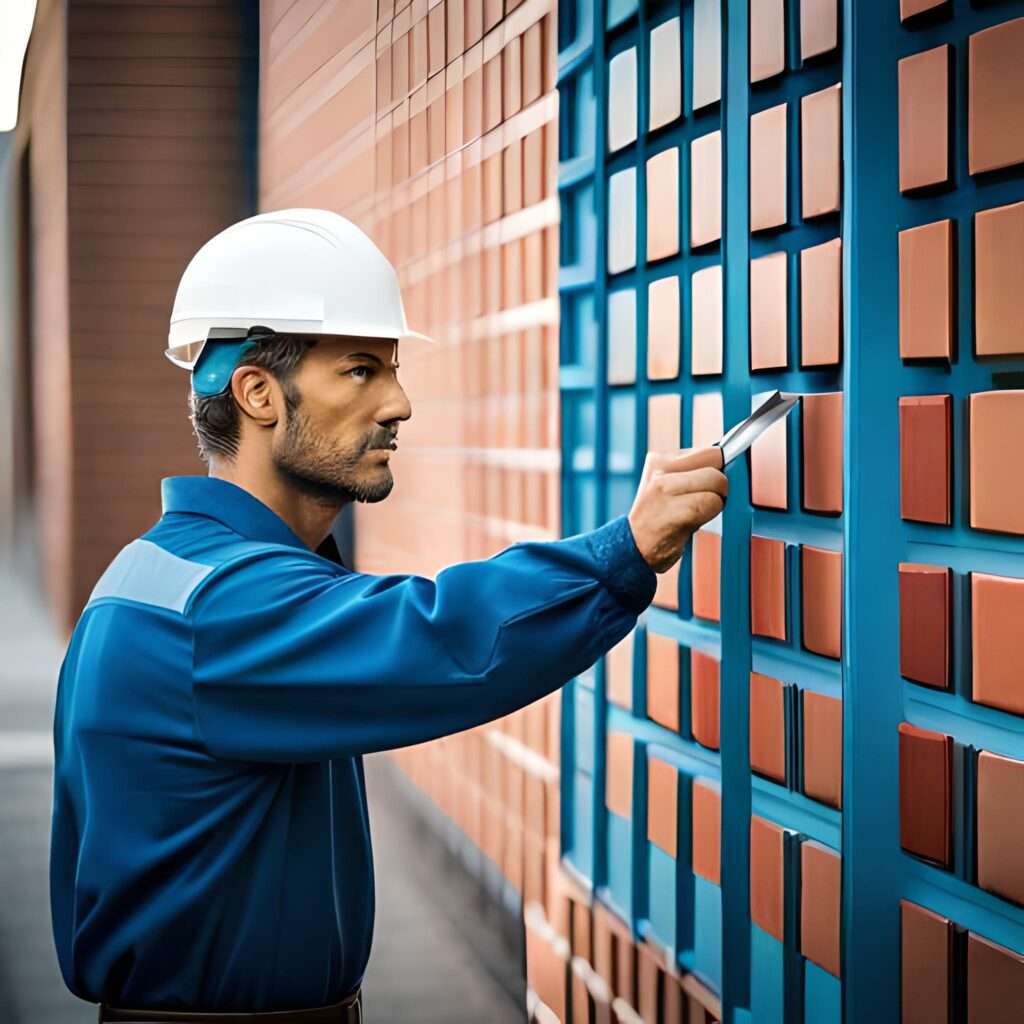
15. Adding Strength with Pillars
If you want extra support and a look, think about using pillars in your wall design. Pillars are like strong posts. They need some planning, but they’re not too hard. They’re like mini-walls, with the middle bricks sticking out into the main wall. The recommended distance between each pillar is 7 to 10 feet.
To make pillars work well, build them a bit taller than the parts in between, around 1 to 2 rows higher. This makes them stronger and looks good too. Start by making the pillars a few rows high. Then, fill in the gaps between the pillars with bricks. Finish the whole wall only after both pillars are done
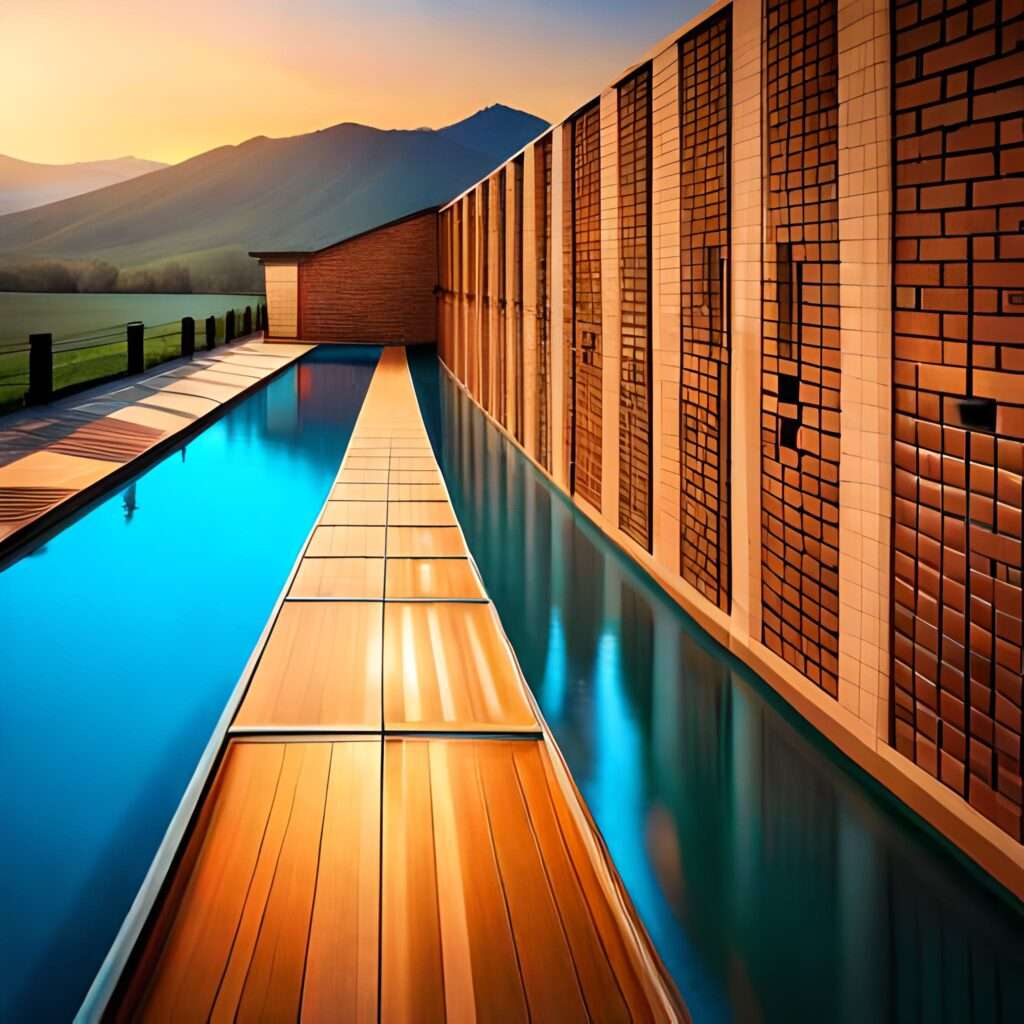
16. Curing and Maintenance
Once the wall is built, it needs some time to get strong. This is called curing. It’s like letting a cake cool after baking. It is recommended that the curing period be five to seven days. In order to gain strength, do proper curing three times a day. Also, from time to time, the mortar between the bricks might start to get weak. This is when we do repointing, which means taking out the old mortar and putting in new, strong mortar.
17. Exploring Different Brick Wall Patterns
Try Different Styles in How to Build a Brick Wall in 2023: You can make your wall using different designs and brick patterns. A wall with just one brick width is simple, but not super strong. A more common choice is a double-brick wall, which is stronger and can fit your needs better.
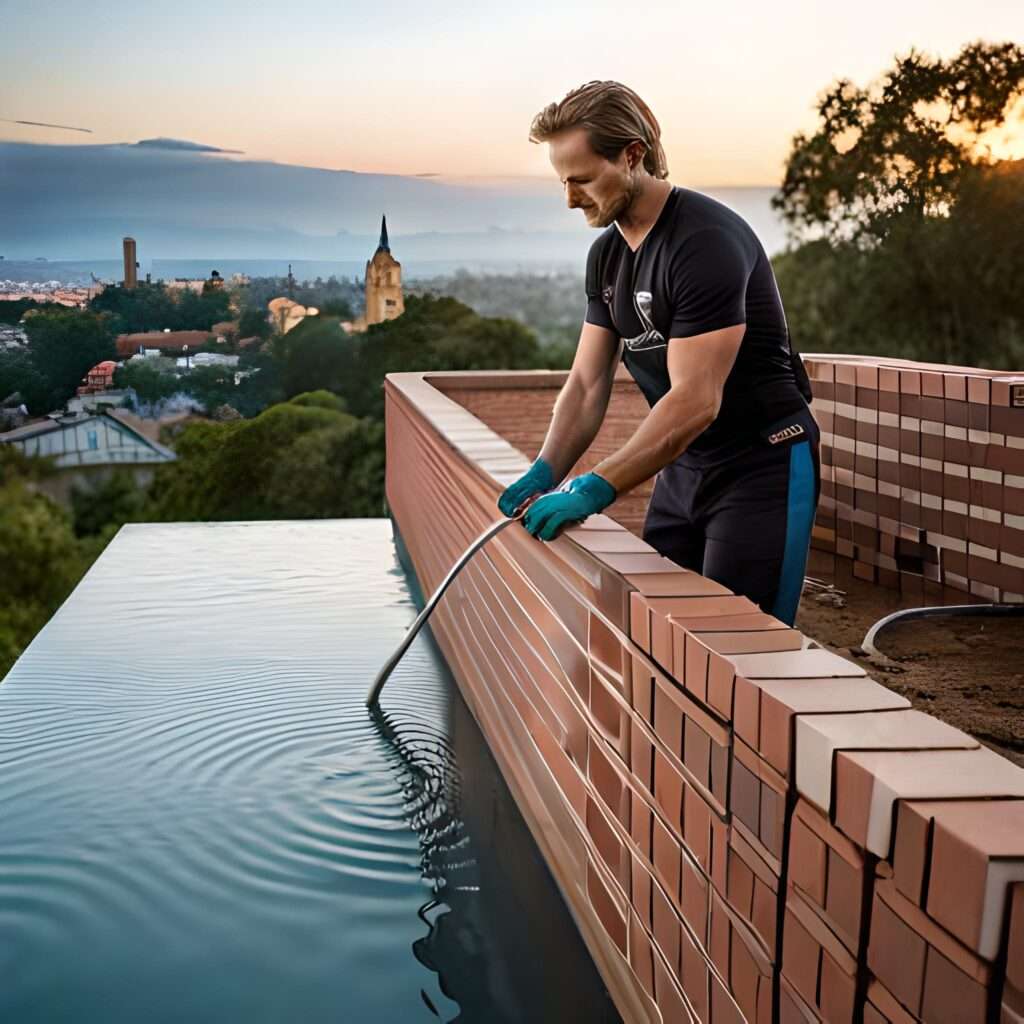
Conclusion
This process of How to Build a Brick Wall in 2023 beautifully blends the worlds of art and science. Starting with digging and ending with placing every brick and mortar carefully, each step builds a sturdy and good-looking structure. By making sure everything lines up, using different patterns, and taking good care, these walls become strong symbols of skilled work.
Even after they’re done, they stay tough and need care. These walls show how old and new ideas come together, making them strong and stunning creations that stand the test of time and keep on inspiring.
FAQs
Q.1: How do I calculate the number of bricks needed for my wall?
Measure the length and height of the wall that you want to build. Multiply these numbers to find the wall’s area in square feet or meters. Then, find out the size and how big each brick is. Divide the total area by the site one brick covers (length times height) and divide the wall’s area by the brick’s area to estimate the number of bricks required. Add extra for waste and changes.
Q.2: What are the different types of bonds used in bricklaying?
Common brick bonds include running bonds (staggered rows), English bonds (alternating courses of headers and stretchers), and Flemish bonds (alternate headers and stretchers in the same course). Each bond has its own structural and aesthetic advantages.
Q.3: How do I ensure the vertical alignment of my brick wall?
Use plumb lines and levels to ensure that each brick is perfectly vertical. This prevents the wall from leaning or tilting, ensuring a strong and stable construction.
Q.4: Can I build a brick wall myself, or should I hire a professional?
While DIY bricklaying is possible, it requires careful planning, proper tools, and some experience. For complex projects or if you’re unsure, it’s advisable to consult or hire a professional bricklayer to ensure a successful outcome.
Q.5: How do I choose the right type of bricks for my project?
Consider factors like weather conditions, structural requirements, and aesthetic preferences. Different types of bricks are available, each designed for specific purposes, such as facing bricks for visible surfaces and engineering bricks for load-bearing areas.
Q.6: What’s the purpose of mortar in brick walls?
Mortar acts as a binding agent that holds the bricks together, providing stability and strength to the wall. It also helps prevent water penetration and improves the overall appearance of the wall.
You May Also Read:
Modern House Interior Design Ideas 2023
20 Instant Luxury Modern Kitchen Design With Island 2023
